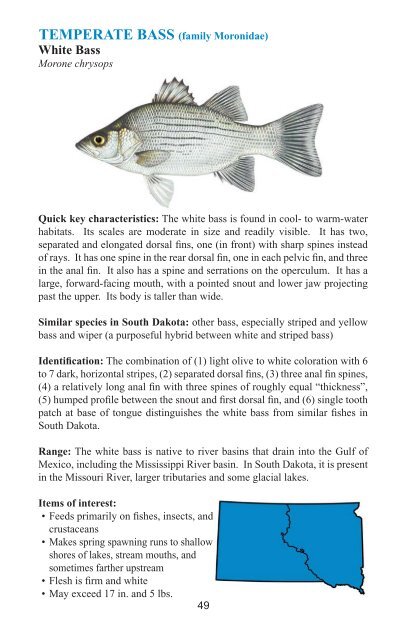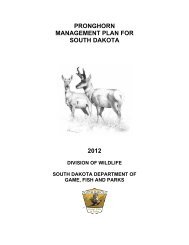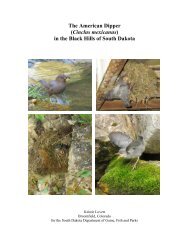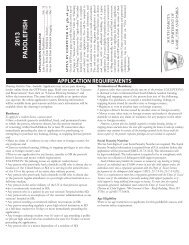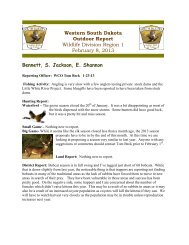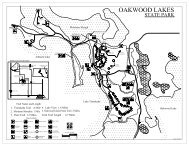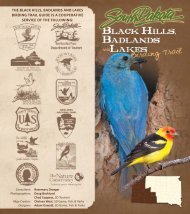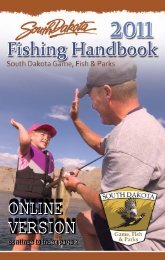pdf version - South Dakota Department of Game, Fish and Parks
pdf version - South Dakota Department of Game, Fish and Parks
pdf version - South Dakota Department of Game, Fish and Parks
You also want an ePaper? Increase the reach of your titles
YUMPU automatically turns print PDFs into web optimized ePapers that Google loves.
TEMPERATE BASS (family Moronidae)<br />
White Bass<br />
Morone chrysops<br />
Quick key characteristics: The white bass is found in cool- to warm-water<br />
habitats. Its scales are moderate in size <strong>and</strong> readily visible. It has two,<br />
separated <strong>and</strong> elongated dorsal fi ns, one (in front) with sharp spines instead<br />
<strong>of</strong> rays. It has one spine in the rear dorsal fi n, one in each pelvic fi n, <strong>and</strong> three<br />
in the anal fi n. It also has a spine <strong>and</strong> serrations on the operculum. It has a<br />
large, forward-facing mouth, with a pointed snout <strong>and</strong> lower jaw projecting<br />
past the upper. Its body is taller than wide.<br />
Similar species in <strong>South</strong> <strong>Dakota</strong>: other bass, especially striped <strong>and</strong> yellow<br />
bass <strong>and</strong> wiper (a purposeful hybrid between white <strong>and</strong> striped bass)<br />
Identifi cation: The combination <strong>of</strong> (1) light olive to white coloration with 6<br />
to 7 dark, horizontal stripes, (2) separated dorsal fi ns, (3) three anal fi n spines,<br />
(4) a relatively long anal fi n with three spines <strong>of</strong> roughly equal “thickness”,<br />
(5) humped pr<strong>of</strong>i le between the snout <strong>and</strong> fi rst dorsal fi n, <strong>and</strong> (6) single tooth<br />
patch at base <strong>of</strong> tongue distinguishes the white bass from similar fi shes in<br />
<strong>South</strong> <strong>Dakota</strong>.<br />
Range: The white bass is native to river basins that drain into the Gulf <strong>of</strong><br />
Mexico, including the Mississippi River basin. In <strong>South</strong> <strong>Dakota</strong>, it is present<br />
in the Missouri River, larger tributaries <strong>and</strong> some glacial lakes.<br />
Items <strong>of</strong> interest:<br />
• Feeds primarily on fi shes, insects, <strong>and</strong><br />
crustaceans<br />
• Makes spring spawning runs to shallow<br />
shores <strong>of</strong> lakes, stream mouths, <strong>and</strong><br />
sometimes farther upstream<br />
• Flesh is fi rm <strong>and</strong> white<br />
• May exceed 17 in. <strong>and</strong> 5 lbs.<br />
49


